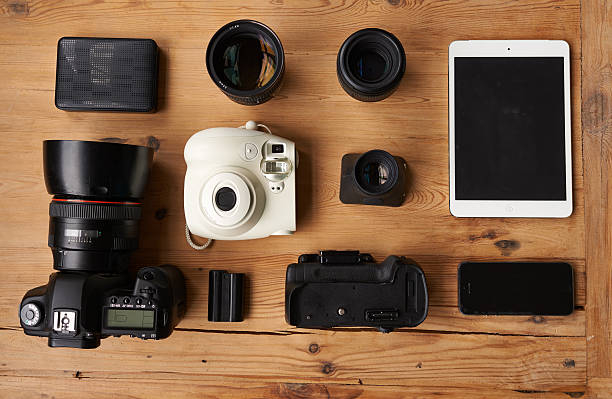
Contingent upon what direction you take a gander at it, it tends to be contended that photography has either not changed by any means since its initiation, or has changed in excess of a Chinese murmur divided among the cast of Happiness.
On one hand, progressions in innovation has seen camera’s and hardware become both reasonable and viable to the point that the typical individual can make proficient pictures which would have been viewed as difficult to the beginner photographic artist only a long time back.
Then again be that as it may, each camera can in any case be viewed as basically a crate with an opening in one end. Sure that opening is very significant (being basically where the light comes through), you actually need the mechanics and means to record a photograph yet at its least difficult, the essential components to catch a picture has not changed.
Openness: is the essential component of any photo taken and recorded. Basically, it is precisely the way in which it sounds, openness is how much light your shot was presented to, and this considers what is delivered in your last picture, be it on film, or more probable these days, carefully. Without light, clearly there is no image. Consider openness your eye, in the event that you are in a totally dark room with no light, you clearly can’t see anything. At the point when we are taking a gander at something we are not really seeing it straightforwardly, we are checking out at the light reflecting and bobbing off the items before us. The equivalent can be expressed on the off chance that there is an excess of light, consider when you awaken around midnight and turn a splendid light on, your eyes have not changed at this point so to you it appears to be excessively brilliant and you can’t center. This is a similar in photography, and why the most widely recognized scrutinize of pictures is that they are either underexposed, (insufficient light significance a picture is excessively dull), or overexposed, (a lot of light prompting an excessively brilliant picture)
Still up in the air by three fundamental components which we will check separately here out.
Gap: is the setting which controls the size of the launch of light which comes through to the focal point. Regularly this is finished by controlling the gap edges which can be changed to permit the gap to decrease, in which less light is let through, or clearly bigger where all the more light is permitted to go through.
Gap: is estimated in f-stops, for instance f/2.0, f/2.8. f/4.0 and so on. The more modest the f-stop number, the bigger the focal point opening, and subsequently the more light a focal point can allow in. For this reason the more honed focal points with lower f-stops are typically more costly than a comparative focal point which can’t match a similar opening, as the more costly focal points can adapt to low light circumstances better. Hence, when somebody is discussing the most extreme gap, this ordinarily implies the least f-stop accessible.
The significant thing to recollect is that for each one stop the gap is ventured down, the twofold how much light which will enter the sensor. The underneath picture shows the contrasting size of openings that a gap will deliver. This is obviously given you and the camera/focal point follows the first opening stops as displayed underneath, as a ton of present day camera’s currently have half stops, f/4.5, f/7.1 and so on for a more exact gap.
The gap: is likewise one of the most basic parts of centering. An enormous profundity of field which is vital when picture takers need however much of the photo in center as could reasonably be expected, like scene photography, needs a base opening as could really be expected (large number). This permits objects in the forefront and foundation to be in center. The inverse is clearly valid for course, in that to accomplish a shallow profundity of field, where a specific point is in center while different pieces of the picture are obscured, a low f-stop ought to be utilized, (low number). This makes the wonderful bokeh we love, which adds emotional impacts to pictures where you need to feature an article or subject, like full scale photography and representation shots. The reality you can post process this impact utilizing Photoshop or a similarly programming these days is sad, however shows the prevalence it has acquired.
Screen Speed: is basically, how much time that the camera lets the light coming in, remain uncovered and become recorded. This can be changed effectively and is estimated in parts, for example 1/60, 1/125. This number connects with the timing that the screen is left open, for instance 1/60 shade speed will mean the screen stays open for 1 60th of a second.
Most camera’s will have a bigger scope of fluctuating shade speeds for the client to work with, from Sonic the Hedgehog like paces of 1/4000 which is perfect for catching moving activity like untamed life or freezing games, to long openings of once in a while north of a short lived, ideal for scene photography or low light photography with a stand.
Movement obscure can likewise be accomplished by panning the camera to follow a subject, and the thought is that the camera will maintain the concentrate generally in center since you are following it, however the foundation which will move comparative with your camera will normally obscure. This is a typical method to convey a feeling of development.
ISO: is somewhat more subtle as the over two with regards to what it is and which job it plays, however has the same amount of significance in deciding right openness. ISO is ordinarily estimated from 100, 200, 400 and so forth, with a low a number as conceivable liked.
This is on the grounds that the higher ISO that is utilized, normally the more ‘clamor’ you get on a picture, where a picture isn’t quite so sharp as in the lower Iso’s. “So for what reason don’t we shoot all shots with a low ISO?” I hear you say. Well basically, it’s occasionally impractical, particularly in troublesome circumstances like low light. Expanding the ISO can permit you to get pictures you wouldn’t typically get, however at an expense, commotion, to simply catch the scene and pin sharp center is an auxiliary idea then expanding the ISO is a choice. At the point when you utilize a higher ISO, you are expanding the responsiveness of the picture sensor, so presently the sensor catches all the more light approaching, yet in addition really encompassing commotion which lessens clearness in your picture.
Regardless of whether your picture is usable at high ISO’s relies upon your gear, clearly the more present day cameras, for example, the Group 5D Imprint 3 creates a few great outcomes even at high ISO’s, for example, ISO 12,800. Contrast that with my old simple to use Sony N-1 where the shots taken even at ISO 800 were noisier than a Korean group watching a Gangnam Style show.
Joining the Three:
Exclusively we have taken a gander at the three components that make up openness, so it’s essential to understand that each of the three should be in a state of harmony to get a ‘decent’ openness. The vital eventually in any case, as the equivalent with essentially all parts of learning photography, is that careful discipline brings about promising results. It’s tied in with learning the specific scene you need and afterward figuring out what settings are awesome. For instance for shooting a high velocity sport occasion around evening time like American Football, you might require a high ISO as it is very low light. To freeze the fast eruption of activity a high shade speed should be utilized (1/1000 is a decent beginning stage). A sluggish shade speed will prompt pictures coming out obscured. Gap will probably be mid-range, as the most reduced settings will not have the option to allow enough to light in. The most straightforward method for messing with these settings it utilizing the pre-set modes on your camera dial, basically every camera has these settings now. There are explicit modes to change simply the gap (Opening Need mode) where you can change only one of the three components, and the camera’s cerebrums will resolve different settings expected to catch the picture for you. So in the event that you really want to underline a long shade speed, for instance you need to make an effort of a cascade and need hazy, velvety water impact, then change the dial to Screen Need to determine only the shade speed and let the camera wrap up. Clearly the most ideal way to become familiar with the right equilibrium is utilizing full manual controls, and by taking a gander at the viewfinder you can frequently see moment criticism to the progressions you have made, for example expanding gap (lower number) will see a lighter picture considered the screen. With everything taken into account, get your camera and get shooting, it’s the main genuine method for learning.


 July 24th, 2022
July 24th, 2022  AWhite
AWhite  Posted in
Posted in  Tags:
Tags: 
